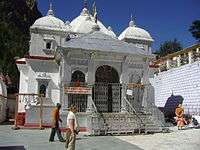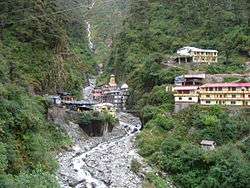Garhwali people
The Garhwali people are an Indo-Aryan ethno-linguistic group native to the Garhwal, in the Indian state of Uttarakhand, who speak Garhwali, an Indo-Aryan language. The bulk of Garhwal people predominantly live in Garhwal – Anyone lives in Garhwal or is associated with Garhwal's heritage is called a Garhwali. Garwhalis includes all speakers of the Garhwali language or its other dialects who live in the Dehradun, Haridwar, Tehri Garhwal, Pauri Garhwal, Uttarkashi, Chamoli and Rudraprayag areas of Uttarakhand, India..
| Regions with significant populations | |
|---|---|
| Languages | |
| Hindi, Garhwali | |
| Religion | |
| Related ethnic groups | |
| Indo-Aryans, Kumaoni people, Khas people |
Many Garhwali diaspora residents live in Indian states and territories such as Uttar Pradesh, Himachal Pradesh, Haryana, Delhi, Punjab, Madhya Pradesh, Rajasthan and Maharashtra. An approximate estimate of 2.5 million Garhwali migrants are living in Delhi and the National Capital Region.
Etymology
In modern usage, "Garhwali" is used to refer to anyone whose linguistic, cultural, and ancestral or genetic origins is from the Garhwal Himalayas. Their ethnonym is derived from the word ‘Garhwal’ or 'Gadwal'. The exact origin of the word Garhwal is unknown. However, it is believed to be derived from the title ‘Garh-wala’ (owner of forts) given to the ruler Mayal, who is said to have consolidated 52 principalities to form the kingdom in the 14th century. After this conquest, the domain under Mayal is said to have been called ‘Garhwal’, possibly due to the numerous forts in the region.
Prior to Mayal, the name of the area and its people was unknown. However, some historians like "Atkinson" have alluded to ‘Khas-des’ (Land of the Khasas), and "Sircar" has stated that ‘Stri-Rajya’ (Kingdom of Women) is the ancient name of Garhwal and Kumaon. However, there are no evidences to corroborate these claims.
The earliest reference to this region are found in the Skanda Purana which describes its names as Kedar Khand and Himvat respectively.'. It describes the area that contained Gangadwar (Haridwar and Kankhala), Badrinath, Gandhamardan, and Kailash.[1]
Garhwal Kingdom
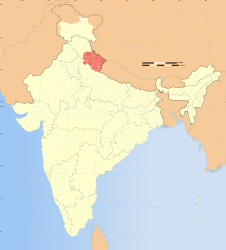
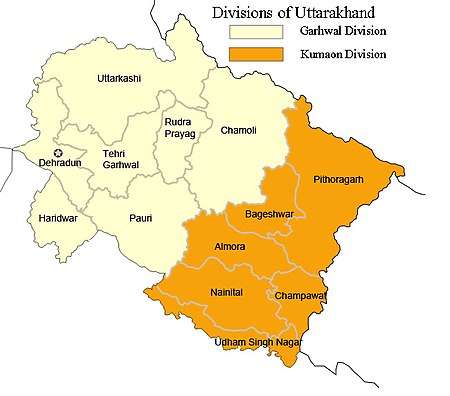
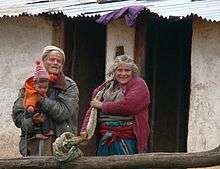
The Kingdom of Garhwal was founded by Mayal Rajputs nearly 1000 years ago. The area comprises 52 principalities called Garhs (fortress). These garhs were small and had their own chiefs who were responsible for the welfare of the garh. The Mayal dynasty ruled the Kingdom until 1803 before the "Gurkhas" invaded Kumaon and Garhwal. Gurkhas defeated Garhwal king and ruled for over twelve years. These Gurkha raided in the British territories that led to broke out the Anglo–Nepalese War in 1814.
At the end of the Anglo–Nepalese War, Garhwal Kingdom and Kumaon Kingdom were known as the British districts. However, Tehri's principality was left to King Sudarshan Shah, son of king Pradymun. A part of this kingdom was taken by the British, and later, it became known as the British Garhwal which spread over the area of 5,629 mi2 (14,580 km2). After the British rule, Garhwal made rapid development. Two battalions of the Indian army (the 39th Garhwal Rifles) were deployed in the area, stationed at the military cantonment of Lansdowne. Grain was one of the major corps of this area. Apart from this, cloth, while salt, borax, livestock, and wool were imported from Tibet. The administrative headquarters of the area were established at Pauri. Srinagar (Garhwal) was the largest city and served as an important trade center along with the town of Kotdwara which is situated at Oudh and Rohilkhand railway tracks. Later, it became a part of the Punjab Hill States Agency of British India. Most of the Uttarkashi district acceded to the Union of India in 1949.
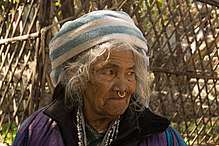
Garhwali are known for their courage because they were preferred by the British as an army. Garhwali Kingdom was one of the few kingdoms that never came under the Muslim rule influence.
The history of Garhwal is older than that of Ramayana and Mahabharata. Worshipping Lord Shiva is attributing reverent honour and homage to him. According to the great Mahabharata, Garhwal is believed to be the land where the Vedas and the Shastras were made.[2]
Language
The Garhwali language (गढ़वळि भाख/भासा) is primarily spoken by the Garhwali people of the north-western Garhwal Division from the northern Indian state of Uttarakhand in the Indian Himalayas. The Garhwali language is classified as a Central Pahari language belonging to the Northern Zone of Indo-Aryan languages. Garhwali is one of the 325 recognised languages of India[3] which is spoken by over 2,267,314 people[4] such as Tehri Garhwal, Pauri Garhwal, Uttarkashi, Chamoli, Dehradun, Haridwar and Rudraprayag districts of Uttarakhand.[5]
The language has many regional dialects including:[6] Srinagari, Tehri (Gangapariya), Badhani, Dessaulya, Lohbya, Majh-Kumaiya, Bhattiani, Nagpuriya, Rathi, Salani (Pauri), Ravai, Parvati, Jaunpuri, Gangadi (Uttarkashi), Chandpuri. Srinagari dialect is the literary standard, while Pauri is generally regarded as the prominent one.
However, for a number of reasons, Garhwali is a rapidly shrinking language. The UNESCO Atlas of the World's Endangered Languages book authored by "Theo Baumann" has described Garhwali language one of the moribund languages that needs to be protected.[7]
Cuisine
The food is simple, subtle, and nutritionally balanced. The diet is characterised by cereals and cereals. A variety of millet preparations, flatbread, and rice, which are the earthy mainstay of meals are eaten with lentil and pulse-based gravies and curries - the main source of protein. Large amounts of native leafy greens and other vegetables add fibre, vitamins and minerals to the diet.
Local deities
Chandrabadni Devi Temple is located in Tehri Garhwal. The temple can be reached either from 8 kilometres (5.0 mi) long rout Kandikhal to Srinagar-Tehri or 9 kilometres (5.6 mi)) long Jamnikhal en route Dev Prayag-Tehri via a link road of Jurana. It can also be reached via (1.5 kilometres (0.93 mi)) long bridle path.
The temple administration body organises several annual events including cultural and religious seminars.[8]
| Rudraprayag | |
|---|---|
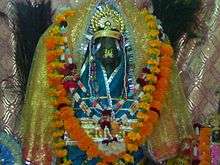 |
|
| Umra Narayan | Koteshwar Mahadev |
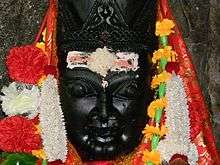 |
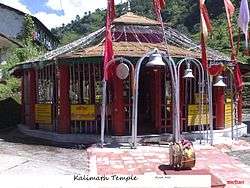 |
| Dhari Devi | Kalimath |
Umra Narayan is situated between the mystic and peaceful hills of Rudraprayag where "Devine" temple of Lord Umra Narayan (Isth Dev of gram sann) is located. According to mythology, this temple was built during the time of Adi Shankracharya, and is believed that it was constructed by Adi Shankracharya when he was on his way to Lord Badrinath's temple. The temple has been now renovated and is 5–7 kilometres (3.1–4.3 mi) away from the central city of Rudraprayag.
It is also believed that most of the "Isth Devas" in the Garhwal region are the incarnation of "Lord Vishnu" (Narsingh Dev JI), and sometimes even the incarnation of "Vishnu" itself.
Koteshwar Mahadev is located about three kilometres inside the 'heart' of Rudraprayag, Koteshwar Mahadev temple. It is dedicated to Lord Shiva. This place is presumed to be the same spot where Lord Shiva was stopped for meditation where he was on his way to Kedarnath. According to local mythology, this temple has its presence since the time of Bhasmasur (the Deadly Asur/demon), who received a boon from "Shiva" that turned a head into Bhasma or ashes whenever he touched with boon to anyone's head. Lord Shiva accompanied by another one reached to a cave which was the home of Lord Shiva, and finally lord "Vishnu" helped him by killing the demon. The temple is filled with fantastic energy/aura, and one can feel it. Few drops of water are continually running through the hill.
Dhari Devi temple of "Dhari Devi" is situated on the banks of the river Alaknanda. One has to travel 15 kilometres (9.3 mi) from Srinagar (Pauri Garhwal) on Srinagar-Badrinath highway to Kaliya Saur, and then turn down where one has to travel half of a kilometre towards Alaknanda river. The upper part of Goddess "Kali" is worshipped here. According to the local people, the face of the idol changes as a girl, a woman, and an old lady according to the passage of time. This idol is located in an open area. Many times, villagers and some philanthropists tried to build a roof for Goddess, but their efforts returned empty handed as the roof gets dismantle every time. As per "Srimad Devi Bhagwat", there are 108 Shakti Peeth as in India, and this holy shrine is one of them.
Kalimath, also known as "Kaviltha", is a village which is regarded as a divine place and Shakti Peeth. It lies at an altitude of around 6,000 feet (1,800 m) on the river Saraswati in the Himalayas, surrounded by the peaks of Kedarnath in Rudraprayag district of Uttarakhand. Kalimath is situated close to Ukhimath and Guptakashi. It is one of the "Siddha Peeths" of the region and is regarded a respectful place with religious importance. The temple of the goddess Kali is located in this village and is visited by many devotees throughout the year, especially during the "Navratras". There are 108 Shakti Peethas in India, and this holy shrine is one of them as described in the "Srimad Devi Bhagwat". The upper part of goddess Kali is worshipped in "Dhari Devi". Goddess Kali killed the demon "Raktavija" here in this area. After killing the demon, they went under the earth. Kalimath is only the place where goddess Kali is being worshipped along with her two sisters "Laxmi" and "Saraswati". There is a temple of the goddess Kali, which is visited by many devotees throughout the year, especially during the Navratras. A peculiar thing about the temple is that no idol is worshipped here except "Sri Yantra". Each year, Puja, a ritual prayer is performed at midnight by the priests presented in this temple. This temple is associated with other goddess such as Laxmi, Saraswati and Gauri Shankar. Bhairava temple is also located near this temple. "Barti Baba" is credited for preserving the sanctity of this sacred shrine. He is believed to had a direct connection with "Maa Kali". The member of Parliament, "Satpal Singh Rawat" (Maharaj), has set up a small religious institute near the temple where pilgrims stay there. The village is the birthplace of "Kalidas", a Sanskrit poet.
Jwalpa Devi Temple: is situated on the bank of holy river Nawalika. It is one of the significant shrines of goddess dedicated to "Jwalpa".
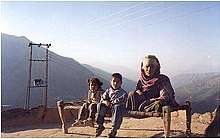
Notable people
This is a list of some notable people of Garhwal.
Film and television
 Anukriti Gusain
Anukriti Gusain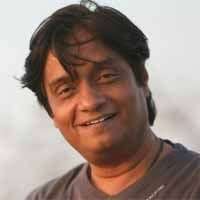 Brijendra Kala
Brijendra Kala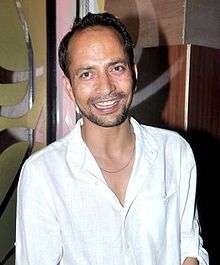 Deepak Dobriyal
Deepak Dobriyal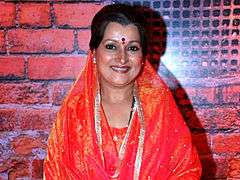 Himani Shivpuri
Himani Shivpuri Manasvi Mamgai
Manasvi Mamgai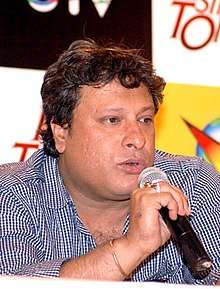 Tigmanshu Dhulia
Tigmanshu Dhulia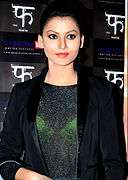 Urvashi Rautela
Urvashi Rautela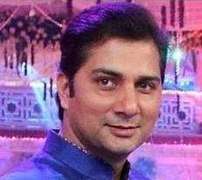 Varun Badola
Varun Badola
Bollywood
- Brijendra Kala (actor, dialogue writer)
- Chitrashi Rawat (actress)
- Deepak Dobriyal (actor)
- Himani Shivpuri (actress)
- Priyanshu Painyuli (actor)
- Sanjay Khanduri (director)
- Swati Semwal (actress)
- Tigmanshu Dhulia (dialogue writer, director, actor, screenwriter, producer and casting director)
- Urvashi Rautela (actress)
- Varun Badola (actor)
- Anushka Sharma (actress)
Television
- Aditi Sajwan (actress)
- Alka Kaushal (actress)
- Asha Negi (actress)
- Barkha Sengupta (actress)
- Priyanka Kandwal (actress)
- Raghav Juyal (dancer, choreographer and actor)
- Richa Panai (actress)
- Shivangi Joshi (actress)
- Shruti Bisht (actress)
- Shruti Ulfat (actress)
Radio
- Abhilash Thapliyal (radio jockey and actor)
Beauty pageants
- Anukriti Gusain (actress, Femina Miss India, Miss Asia Pacific World 2014)
- Manasvi Mamgai (model, Femina Miss India 2010)
Hollywood
- Navi Rawat (Indian-American actress)
Music
Bollywood
Folk music
- Basanti Bisht (folk singer, Padma Shri award recipient)
- Chander Singh Rahi (folk singer, composer, poet musician)
- Jeet Singh Negi (folk singer)
- Meena Rana (folk singer)
- Narendra Singh Negi (folk singer and composer, Padma Shri and Sangeet Natak Akademi Award recipient)
- Pritam Bhartwan (folk singer, Padma Shri award recipient)
Art
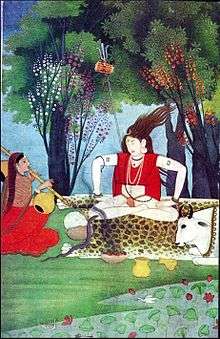 Mola Ram painting 1
Mola Ram painting 1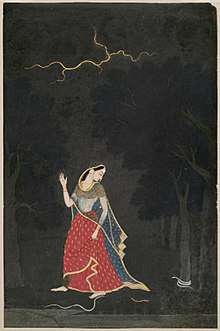 Mola Ram painting 2
Mola Ram painting 2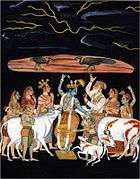 Mola Ram painting 3
Mola Ram painting 3
- Abodh Bandhu Bahuguna (Hindi writer and poet)
- Arushi Nishank (Kathak dancer)
- Ganga Prasad Vimal (Hindi writer and poet)
- Leeladhar Jagudi (Hindi writer, poet, Padma Shri and Sahitya Akademi Award recipient)
- Manglesh Dabral (Hindi writer, poet and journalist, Sahitya Akademi Award recipient)
- Mola Ram (18th century Indian painter, who originated the Garhwal branch of the Pahari/Kangra school of painting)
- Ranbir Singh Bisht (Indian painter and the Principal of the College of Fine Arts, Lucknow University, Padma Shri and Lalit Kala Akademi Fellowship recipient)
- Taradutt Gairola (lawyer, author, editer)
- Viren Dangwal (Hindi writer, poet, journalist and academician, Sahitya Akademi Award recipient)
Social work and activism
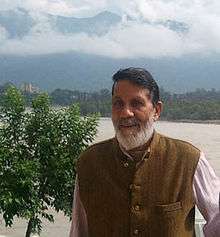 Chandi Prasad Bhatt
Chandi Prasad Bhatt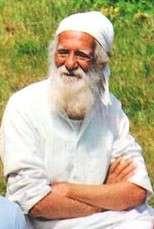 Suderlal Bahuguna
Suderlal Bahuguna
- Anil Prakash Joshi (environmentalist, Padma Shri and Padma Bhushan recipient)
- Chandi Prasad Bhatt (environmentalist, Chipko movement leader, Padma Bhushan and Ramon Magsaysay Award recipient)
- Gaura Devi (Leader of Mahila Mangal Dal of Chipko movement) - Indira Priyadarshini Vrikshamitra Award recipient)
- Kunwar Singh Negi (braille editor and social worker, Padma Shri and Padma Bhushan recipient)
- Sunderlal Bahuguna (environmentalist, Chipko movement leader, Padma Vibhushan recipient)
Indian independence movement
- Nagendra Saklani (Indian revolutionary and freedom fighter)
- Ram Prasad Nautiyal (Indian freedom fighter and politician)
- Sri Dev Suman (Indian freedom fighter, journalist and civil rights leader)
Historical figures
- Teelu Rauteli, folk heroin of Garhwal, Uttarakhand
Religion
- Dabral Baba (Indian yogi and mystic)
- Hans Maharaj (Indian spiritual leader)
- Prem Rawat (Indian American spiritual leader, founder of the Divine Light Mission)
- Swami Rama (founder of the Himalayan Institute Hospital Trust)
Science and academics
- Anand Sharan Raturi (economist and first vice-chancellor of Mahatma Jyotiba Phule Rohilkhand University)
- Aditya Narayan Purohit (Plant physiologist, Padma Shri awarded and vice-chancellor of H.N.B. Garhwal University)
- Anirudh Kala (psychiatrist)
- Chandra Prakash Kala (ecologist)
- Prem Lal Joshi (accounting researcher and professor)
- Ruchi Badola (ecologist)
- Vijay Prasad Dimri (geophysical scientist, Padma Shri recipient)
Indian Armed Forces
.jpg) General Bipin Rawat
General Bipin Rawat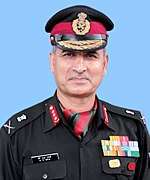 Lt. Gen. Balwant Singh Negi
Lt. Gen. Balwant Singh Negi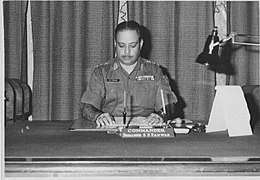 Brigadier Surendra Singh Panwar
Brigadier Surendra Singh Panwar
Gallantry award recipients
- Naik Darwan Singh Negi, Victoria Cross from 1st Battalion of 39th Garhwal Rifles
- Rifleman Gabar Singh Negi, Victoria Cross from 2nd Battalion, 39th Garhwal Rifles (posthumous)
- Havildar Gajender Singh Bisht, Operation Black Tornado 2008, Ashoka Chakra (posthumous)
- Rifleman Jaswant Singh Rawat, hero of Indo-China War, 1962; Maha Vir Chakra (posthumous)
Prominent names
- General Bipin Rawat, Chief of Defence Staff and former Chief of the Army Staff
- Lt. Gen. Anil Chauhan, Director General of Military Operations (DGMO), Indian Army
- Lt. Gen. Anil Kumar Bhatt, General Officer Commanding (GOC) XV Corps, also called as the "Chinar Corps" of the Indian Army, former Director-General of Military Operations (DGMO), Indian Army.
- Lt. Gen. Balwant Singh Negi (Retd.), former General Officer Commander-in-Chief (GOC-in-C), Central Command, Indian Army
- Lt. Gen. Madan Mohan Lakhera (Retd.), former Governor of Mizoram, former Lieutenant Governor of Puducherry
- Lt. Gen. Tejpal Singh Rawat (Retd.), former Director General of the Assam Rifles, Indian Army and former MP Lok Sabha
- Director-General Rajendra Singh, former Director General of the Indian Coast Guard
- Maj. Gen. B. C. Khanduri (Retd.), former Union Minister of Surface Transport, former Chief Minister of Uttarakhand and former MP Lok Sabha
- Air Marshal Arvindra Singh Butola, Air Officer Commander-in-Chief (AOC-in-C), Training Command, Indian Air Force
- Brigadier Surendra Singh Panwar (Retd.)
- Brigadier S. K. S. Negi (Retd.)
- Colonel Ajay Kothiyal (Retd.), Kirti Chakra and Shaurya Chakra recipient
Bureaucracy
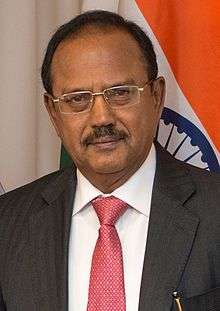 Ajit Doval
Ajit Doval
- Ajit Doval, National Security Adviser of India, Kirti Chakra, President's Police Medal and Police Medal recipient
- Anil Dhasmana, former chief of the Research and Analysis Wing, the external intelligence agency of India
Judiciary
- Mukandi Lal (barrister, judge, politician, writer, and art critic from the Princely State of Tehri Garhwal)
- Sudhanshu Dhulia (Justice, Uttarakhand High Court. Judge In-Charge Education, Uttarakhand Judicial and Legal Academy)
Politics
- Anil Baluni (journalist, politician, MP Rajya Sabha)
- Bhakt Darshan (politician, former Union Minister of State for Education and Transport, former MP Lok Sabha)
- Brahm Dutt (politician, former Union Minister of State for Petroleum and Natural Gas, former MP Lok Sabha)
- Chandra Mohan Singh Negi (politician, former MP Lok Sabha)
- Hemwati Nandan Bahuguna (politician, former Chief Minister of Uttar Pradesh)
- Kamalendumati Shah (former Queen of the Princely State of Tehri Garhwal, former MP Lok Sabha)
- Mahant Avaidyanath (politician, former Mahant of Gorakhnath Math, former MP Lok Sabha)
- Mala Rajya Laxmi Shah (politician, MP Lok Sabha)
- Lt. Col. Manabendra Shah (politician, former King of the Princely State of Tehri Garhwal, former MP Lok Sabha)
- Manohar Kant Dhyani (politician, former MP Rajya Sabha)
- Manorama Dobriyal Sharma (politician, former MP Rajya Sabha)
- Paripoornanand Painuli (politician, former MP Lok Sabha)
- Ramesh Pokhriyal (politician, Union Minister of Human Resource Development, former Chief Minister of Uttarakhand)
- Rita Bahuguna Joshi (politician, MP Lok Sabha)
- Satpal Maharaj (politician, former MP Lok Sabha)
- Tirath Singh Rawat (politician, MP Lok Sabha)
- Trepan Singh Negi (politician, former MP Lok Sabha)
- Trivendra Singh Rawat (politician, Chief Minister of Uttarakhand)
- Vijay Bahuguna (politician, former Chief Minister of Uttarakhand)
- Yogi Adityanath (politician, Mahant of Gorakhnath Math, Chief Minister of Uttar Pradesh, former MP Lok Sabha)
Business and industry
- P. L. Gairola, Indian banker, former chairman of Dena Bank
- O. P. Bhatt, Indian banker, 22nd Chairman of the State Bank of India
- Shaurya Doval, investment banker
Sports
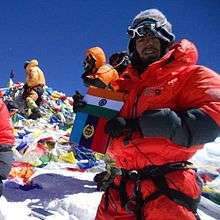 Arvind Raturi
Arvind Raturi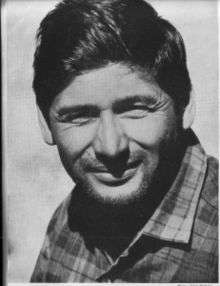 Major Harsh Vardhan Bahuguna
Major Harsh Vardhan Bahuguna_D._Jayal.jpg) Major Narendra Dhar Jayal
Major Narendra Dhar Jayal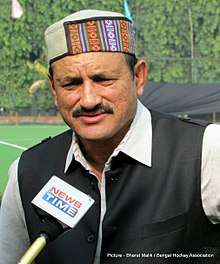 Mir Ranjan Negi
Mir Ranjan Negi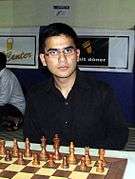 Parimarjan Negi
Parimarjan Negi.jpg) Vartika Joshi
Vartika Joshi
Mountaineering
- Arvind Raturi (Mountaineer, scaled Mt. Everest as a part of the NCC Mt Everest Expedition Team in 2013)
- Major Harsh Vardhan Bahuguna (Mountaineer, Padma Shri recipient (posthumous))
- Major Jai Vardhan Bahuguna (Mountaineer, Shaurya Chakra recipient (posthumous))
- Kanhaya Lal Pokhriyal (Indian Police officer and mountaineer, summited Mt. Everest, Padma Shri recipient)
- Major Narendra Dhar Jayal (Mountaineer, founding principal of the Himalayan Mountaineering Institute at Darjeeling)
Shooting
- Jaspal Rana (Commonwealth Games gold medalist in shooting, Padma Shri recipient)
- Sushma Rana (2006 Commonwealth Games at Melbourne)
Chess
- Parimarjan Negi (third-youngest chess grand-master in history, Arjuna Award 2010)
Hockey
- Mir Ranjan Negi (former goalkeeper of Indian national hockey team, former coach of Indian women's national hockey team who became a recipient of the Gold medal at 2002 Commonwealth Games, of Chak De India fame)
Athletics
- Manish Rawat (Race-walker), 2016 Rio Olympics)[9]
Cricket
- Amit Uniyal (Left-arm-fast-medium bowler, plays for Punjab cricket team, currently a part of Rajasthan Royals in the Indian Premier League)
- Aryan Juyal (Wicketkeeper-batsman, part of the India national under-19 cricket team who won the 2018 Under-19 Cricket World Cup)
- Hemlata Kala (Player for the India national women's cricket team)
- Pawan Negi (First-class cricketer, All-rounder, plays for Delhi cricket team in domestic cricket, currently a part of Royal Challengers Bangalore in the Indian Premier League)
- Pawan Suyal (First-class cricketer, Left-arm medium-pace bowler, plays for Delhi cricket team in domestic cricket, currently a part of Delhi Capitals in the Indian Premier League)[10][11]
- Preeti Dimri (Player for India women's national cricket team)
Football
- Deependra Negi (Indian professional football midfielder for Kerala Blasters in the Indian Super League)
- Manish Maithani (Indian precessional football midfielder for Pune City in the Indian Super League)
- Sahil Panwar (Indian professional football defender for Pune City in the Indian Super League)
See also
References
- Rawat, Ajay S. Garhwal Himalayas: A Study in Historical Perspective.
- Service, Tribune News. "Kingdom that Mughals could never win". Tribuneindia News Service. Retrieved 2 January 2020.
- "India languages". We make learning fun. Hindikids. Retrieved 14 May 2013.
- "Census of India - Statement 1". 6 February 2012. Archived from the original on 6 February 2012. Retrieved 28 May 2018.
- Claus-Peter Zoller (March 1997). "Garhwali. A language of India". Ethnologue. Retrieved 14 May 2013.
- "Garhwali". Ethnologue. Retrieved 31 May 2018.
- "UNESCO Interactive Atlas of the World's Languages in Danger". UNESCO. Retrieved 14 May 2013. Search 'Garhwali'
- "Chandrabadni Devi Temple". euttaranchal.com. Retrieved 14 May 2013.
- "Dehradun's Manish to represent India in Japan's Asian Walking Championship 2017 - Himalayan Buzz". Himalayan Buzz. 12 February 2017. Retrieved 6 June 2018.
- NDTVSports.com. "Pawan Suyal Profile - Cricket Player,India|Pawan Suyal Stats, Ranking, Records inCricket -NDTV Sports". NDTVSports.com. Retrieved 20 June 2018.
- "7 Popular Cricket Players from Uttarakhand - Himalayan Buzz". Himalayan Buzz. 14 March 2016. Retrieved 20 June 2018.
External links
Himalay Parichay - Rahul Sankrityayan, Source : https://epustakalay.com/book/96882-himalaya-parichay-by-rahul-sankrityayan/
